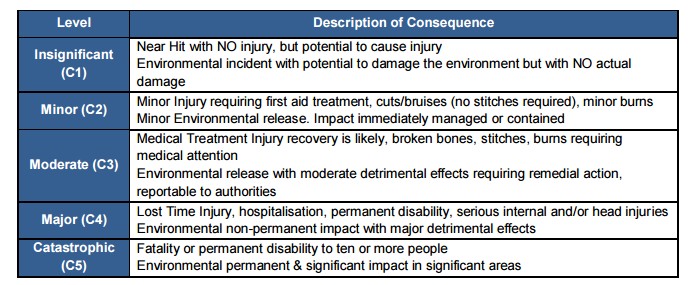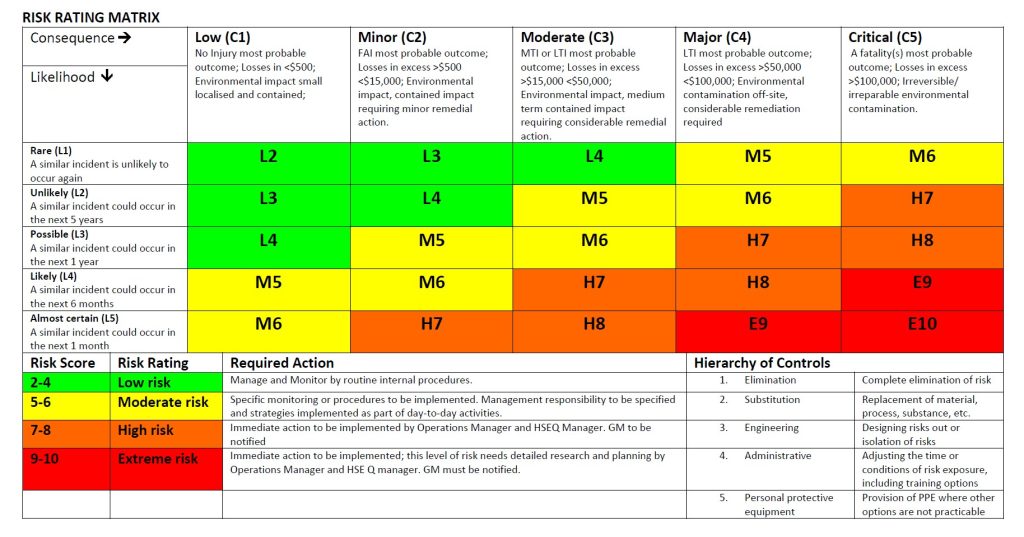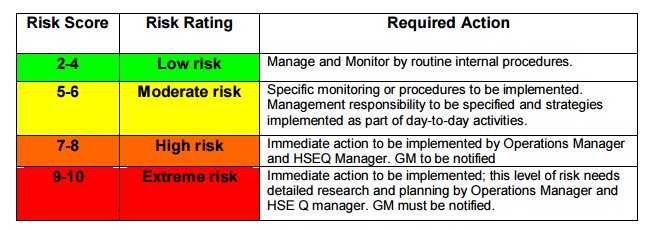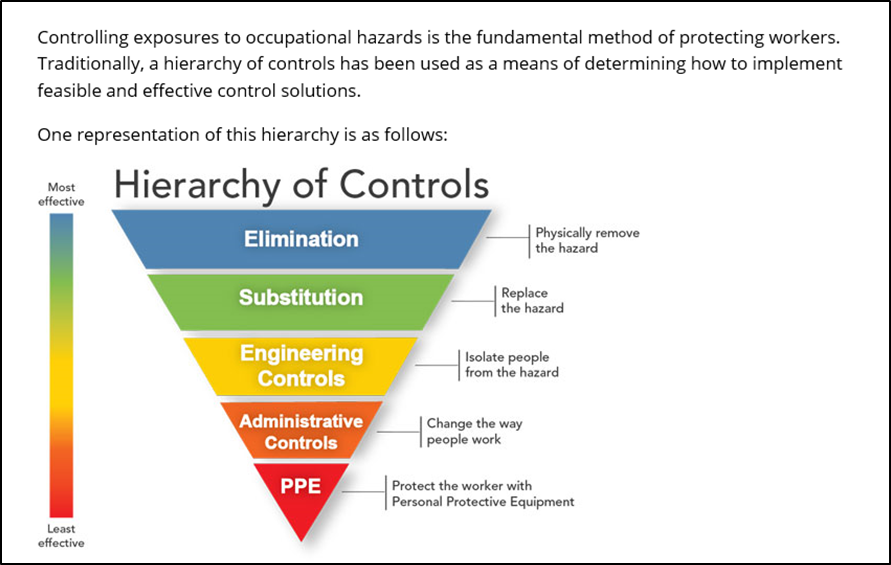Assessment of Risk
The level of risk associated with individual hazards is assessed against two criteria:
- the probability that the identified situation will occur; and

- the likely outcome should that situation occur.

Risk is identified using the following ranking system:


Hierarchy of Controls
Ages Build will comply with the relevant Work Health & Safety Acts, Work Health & Safety Regulation, Codes of Practice and Australian Standards for the management of risks and hazards in the workplace.
The hierarchy of risk control when implementing any risk control measures starting at level 1 and if not possible uses a combination of the remaining control methods:
The ways of controlling risks are ranked from the highest level of protection and reliability to the lowest as shown in Figure 2. This ranking is known as the hierarchy of risk control. The WHS Regulations require duty holders to work through this hierarchy when managing risk under the WHS Regulations.

Ages Build will always aim to eliminate a hazard, which is the most effective control. If this is not reasonably practicable, you should minimise the risk by working through the other alternatives in the hierarchy.
Level 1 Control Measures
The most effective control measure involves eliminating the hazard and associated risk. The best way to do this is by, firstly, not introducing the hazard in the workplace. For example, you can eliminate the risk of a fall from height by doing the work at ground level.
Eliminating hazards is often cheaper and more practical to achieve at the design or planning stage of a product, process or place used for work. In these early phases there is greater scope to design out hazards or incorporate risk control measures that are compatible with the original design and functional requirements. For example, a noisy machine could be designed and built to produce as little noise as possible which is more effective than providing workers with personal hearing protectors.
You can also eliminate risks by removing the hazard completely, for example, by removing trip hazards on the floor or disposing unwanted chemicals.
It may not be possible to eliminate a hazard if doing so means that you cannot make the end product or deliver the service. If you cannot eliminate the hazard, then eliminate as many of the risks associated with the hazard as possible.
Level 2 Control Measures
If it is not reasonably practicable to eliminate the hazards and associated risks, you should minimise the risks using one or more of the following approaches:
- Substitute the hazard with something safer – For instance, replace solvent based paints with water based ones.
- Isolate the hazard from people – This involves physically separating the source of harm from people by distance or using barriers. For instance, install guard rails around exposed edges and holes in floors, use remote control systems to operate machinery, store chemicals in a fume cabinet.
Use Engineering Controls
An engineering control is a control measure that is physical in nature, including a mechanical device or process. For instance, use mechanical devices such as trolleys or hoists to move heavy loads, place guards around moving parts of machinery, install residual current devices (electrical safety switches), set work rates on a production line to reduce fatigue.
Level 3 Control Measures
These control measures do not control the hazard at the source. They rely on human behavior and supervision, and used on their own, tend to be least effective in minimising risks. Two approaches to reduce risk in this way are:
Use Administrative Controls
Administrative controls are work methods or procedures that are designed to minimise exposure to a hazard. For instance, develop procedures on how to operate machinery safely, limit exposure time to a hazardous task, use signs to warn people of a hazard.
Use Personal Protective Equipment (PPE)
Examples of PPE include ear muffs, respirators, face masks, hard hats, gloves, aprons and protective eyewear. PPE limits exposure to the harmful effects of a hazard but only if workers wear and use the PPE correctly.
Administrative controls and PPE should only be used:
- when there are no other practical control measures available (as a last resort)
- as an interim measure until a more effective way of controlling the risk can be used, or
- to supplement higher level control measures (as a back-up).